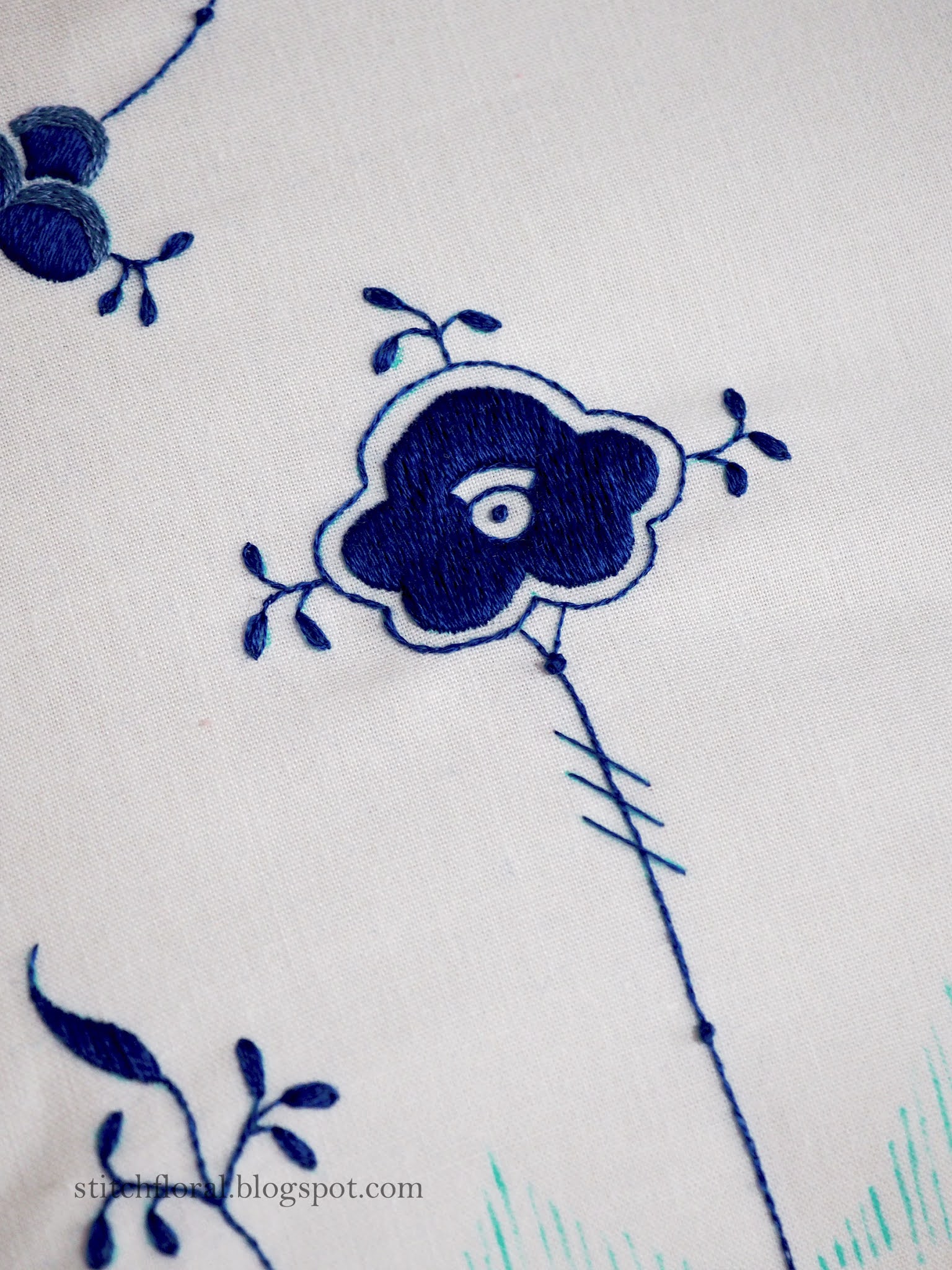Filling an irregular shape with long and short stitching
As I was working on a new issue of the magazine, I thought of sharing with you some tips for filling irregular eggs with long and short stitches. Mainly because there has been such a demand lately.
Check out my other posts on Swipoint Tips here .
However, if you know the purpose, say so in the comments below. :)
I was asked how to fill large spaces with long and short stitches. For example, when you have an idea and want to fill the space around it with color, for example. The procedure described in this post is almost the same.
Number 1, the most important thing to do is choose the direction of the points and stay until the end.
If it is vertical, make it vertical even at the smallest point of the angle or curve.
Do not think that "since there is a small space in it, it is curved, it may look better if you tilt a little to align my points with the curve ..." or something like that. No no no. The direction of the points must be constant regardless of the accuracy of this area.
And this is almost the whole mystery. It only remains to be patient, because it requires effort and time to fill large areas with SIM.
The flower I had to fill also has an irregular shape. It can be tempting to fill it with satin stitches with a radial egg, starting from the side and ending in the middle.
But vertical stitches look more elegant, I think.
So the first thing you can do is show the direction. I made it with a simple pencil; If it lasts, it does not matter, everything will be covered.
Then start sewing long and short as usual. There is no specific strategy here. First, I use the guidance points and then I focus on the points I worked on before. You can see that there is an angle and curve between this model, but we have to face the temptation to change the direction of the points to fit them. It will damage the appearance of the seam.
And here is the result.
We are waiting for the full version :)











